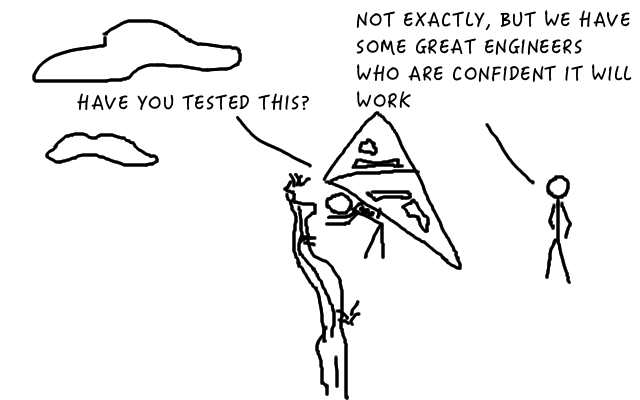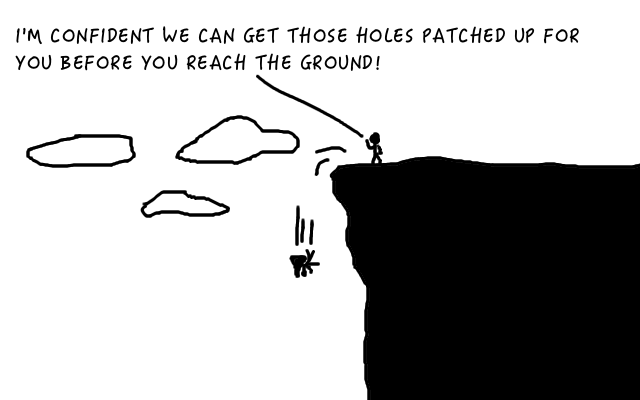On Testing Part 1: Why?
Lately I’ve been thinking about testing, so in this series I want to talk about how I approach testing and some of my personal philosophy. I intend to focus on what I believe it takes to make tests work as part of a robust development process.
Is this series for me?
Have you never written automated tests before? Does Dave 1 frequently lament the fact that every time he adds functionality he has to fix up the tests to actually run? Does Brian 2 WTF every time he looks at someone else’s test code to see why it’s failing? Do you see a lot of regressions between software versions?

If you answered “yes” to any of these, then there might be something for you here. If not, then congratulations - it looks like you’ve succeeded in making automated testing work for you! You’re probably better off ignoring what I have to say because what works for me might not be what works for you.
Why Testing?
Testing is becoming a fundamental part of software development these days. To quote the Django tutorial, “other developers want to see tests in your software before they take it seriously” 3. Unfortunately, being a capable developer doesn’t always mean you’re capable of writing good tests.
When I started professional software development I was the sole developer for a small company, and somewhat inexperienced. Which means I didn’t write many tests. Which, in turn, means that the first thing I was responsible for shipping was horribly broken. I’m not ashamed to admit this because learning how to do things well is part of the process of becoming an experienced developer. As a result, something I learned the hard way early on is that testing is really important. I also quickly realised that automated testing is a way to minimise the burden in a small company without any kind of dedicated test or QA.

So, at this point in my career I had established that testing is good. Testing makes life better, less stressful, and gives you confidence that what you think you’re shipping is what you’re actually shipping. Soon after that I realised something else: no-one had taught me how to write good tests and I needed to learn.
Being a good software developer is all about practice, first you write code to learn how to write code, after a while the code comes naturally - but then you have to learn how to write code that stands the test of time, code that other people can work with. This second stage takes time because the feedback cycle is so long. You might not realise that your code is bad until months or years down the line when you, or someone else, comes back to it. You might not realise until several iterations after that when, coming back to something, you see that change heaped upon change has turned what was once beautiful into something incomprehensibly ugly.
It’s the same with writing tests, unless you do it, you don’t learn to do it well. You don’t learn which tests are useful and catch bugs, and which tests are nothing but a maintenance nightmare. You don’t learn how to structure your tests so that, when you come back to them because they fail, you can understand what they were trying to achieve.
There are really two types of testing you can do, automated and manual testing. Automated testing means that tests are run automatically, without user intervention, and give you a binary PASS/FAIL result. Manual testing means that someone sits down and physically drives the software to see if it does what it’s supposed to.
Both kinds of testing have strengths and weaknesses, but the fact is I’m a software developer, and I’m interested in how we go about using automated testing to make software better. I’m hoping that by writing down some of things I’ve learned, I might make that learning phase a bit less painful for someone else. I’m sure you’re super excited to read more, but that’s it until the next post when I’m going to introduce the first theme of the series - “The Test Pyramid”.